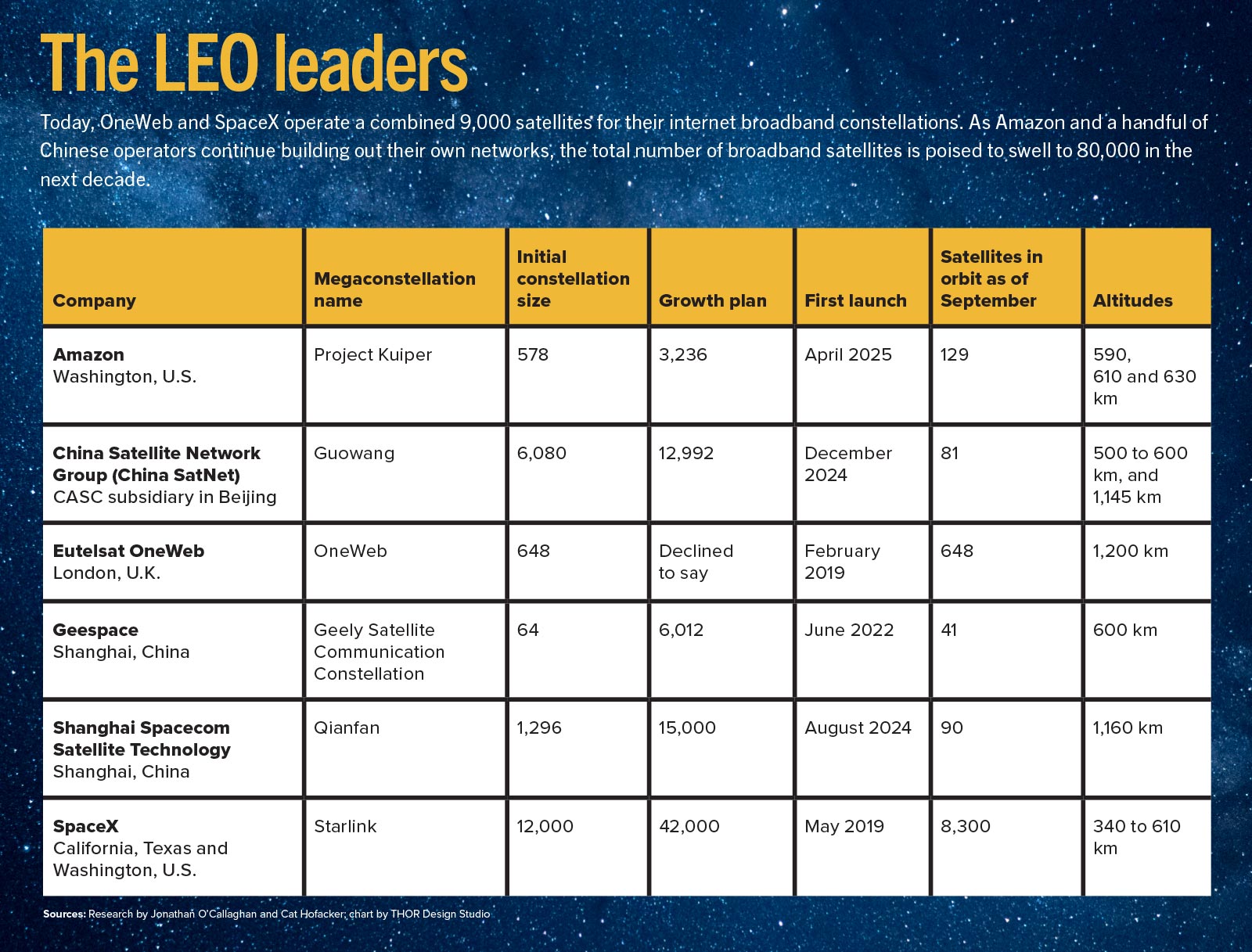Aerospace America By Jonathan O'Callaghan 10/1/2025
SpaceX has proven that thousands of satellites can be operated without collisions in low-Earth orbit, but that task could become more difficult as Amazon and others deploy their own megaconstellations. Jonathan O’Callaghan explores the factors at play. In September 2019, when SpaceX had launched barely 500 satellites, the U.S. military found that one of them, Starlink 44, had an unnervingly high collision risk — a chance of 1 in 1,000 — with a European Earth observation satellite called Aeolus. After contacting SpaceX, the European Space Agency raised Aeolus’ orbit by about 350 meters to ensure the two spacecraft would miss each other, while Starlink 44 stayed put.
Despite the happy ending, the situation raised concerns that the arrival of Starlink and other megaconstellations would make collisions an increasingly likely prospect, each of which could produce thousands of new pieces of debris.
“I was one of the people that was doubtful,” recalls Victoria Samson, an expert in space security at the Secure World Foundation, a Washington, D.C.-based nonprofit.
Six years later, those fears have not materialized. As of this writing, SpaceX has encountered no collisions with Starlink, which numbers 8,300 satellites and growing — roughly two-thirds of all the active satellites on orbit.
“It’s been perhaps better than we feared,” says Samson.
But with a handful of companies across the U.S. and China beginning to launch and deploy satellites for their own megaconstellations, experts are bracing for a new era in which several Starlink-sized networks circle Earth. Old worries are re-emerging, in particular the probability that adding tens of thousands additional satellites in low-Earth orbit all but guarantees an increase in collisions, unless governments and companies can devise adequate rules of the road, including ample communication.
The megaconstellation era might not end with satellite broadband, either. There are proposals for erecting such networks to collect solar power and convert it to electricity that is beamed to Earth, as a means of providing clean power to cities and countries. Other ideas center on broader Earth observation fleets like that operated by Planet, or higher-precision navigation services from networks of small satellites.

More:
https://aerospaceamerica.aiaa.org/features/heavy-traffic-ahead/